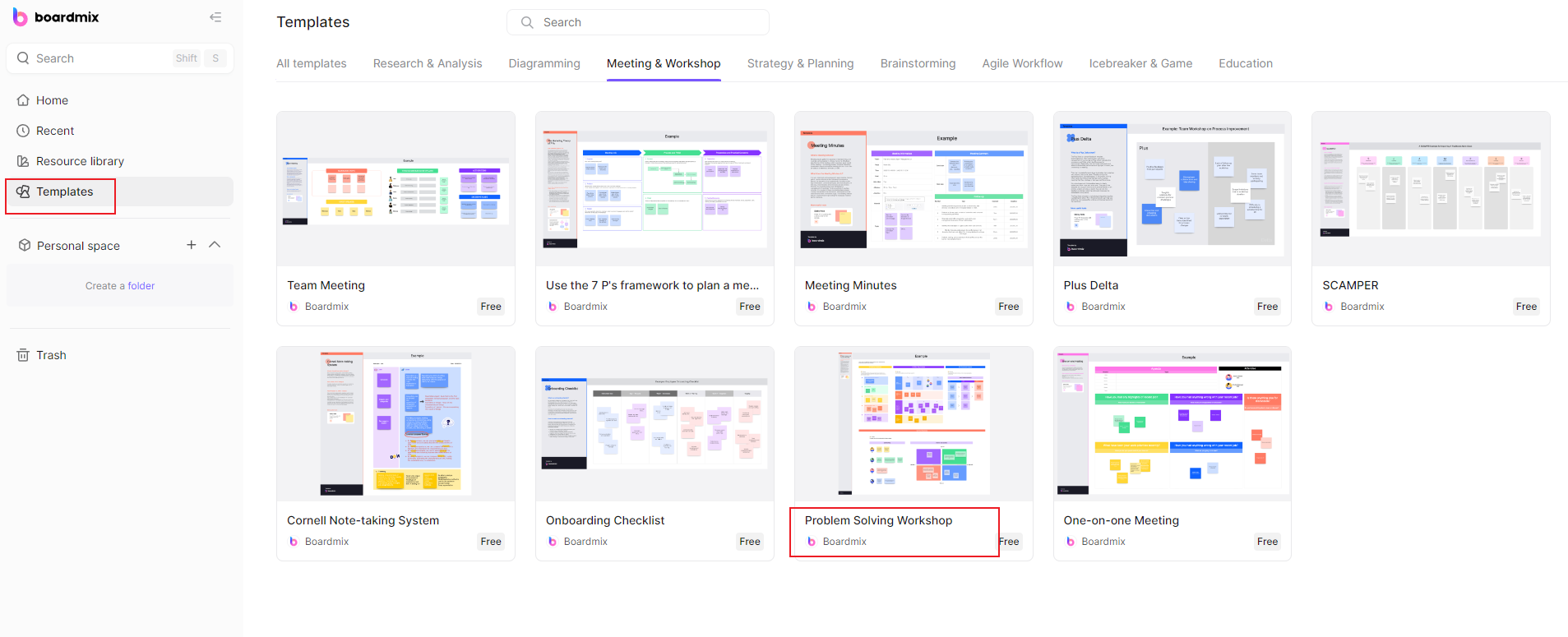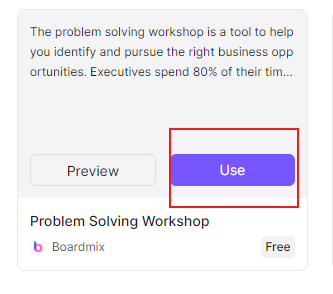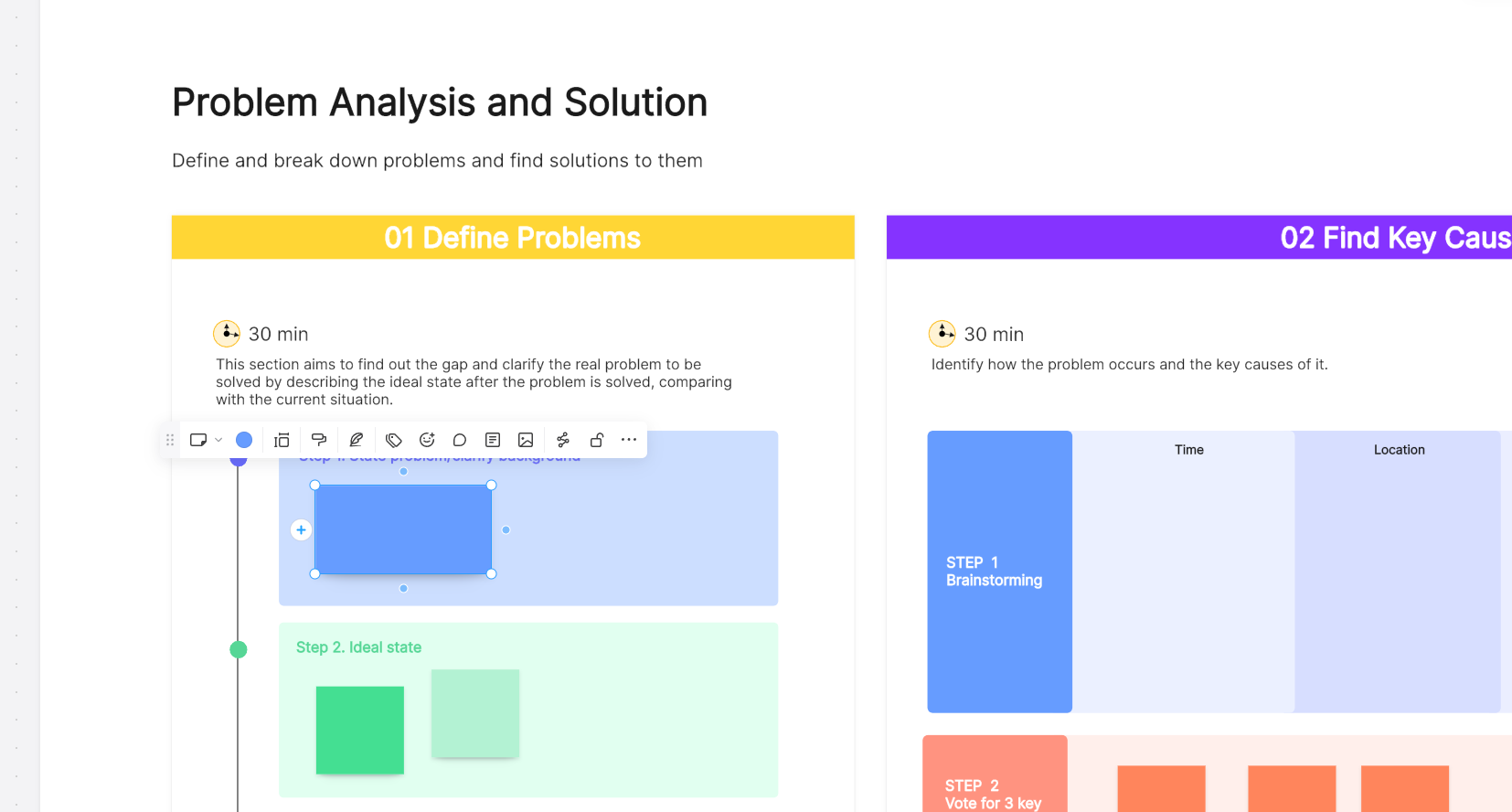Problems are inevitable in various aspects of life, including work, relationships, and personal matters. Embracing creativity, analytical thinking, and a positive attitude aids in swiftly finding solutions. In business, problem-solving workshops offer an effective method to address challenges. Utilizing teamwork, brainstorming, and critical thinking during these sessions helps reach practical and innovative solutions, fostering a proactive approach to problem-solving in any organization.
What is a problem-solving workshop?

A problem-solving workshop involves team or organizational members working together to find solutions for various personal or work-related challenges. Sequentially following specific steps, such as teamwork, brainstorming, and critical thinking, leads to the best solution. The collective effort focuses on achieving the common goal of resolving the issue effectively.
Situations where a problem-solving workshop is needed
As mentioned earlier, problems are an everyday occurrence, making problem-solving workshops applicable to a wide range of situations in both personal and professional settings. Here are some common examples.
When a problem arises that brings everything else to a standstill
In critical situations where a single problem halts business operations, engaging in a problem-solving workshop becomes essential rather than opting for temporary fixes that may or may not resolve the issue. Taking proactive steps to address the root cause through collaborative problem-solving is crucial for maintaining business continuity and achieving lasting solutions.
When a problem keeps recurring despite using a variety of quick solutions
If a problem keeps happening, a more in-depth process is needed to finally find a real solution for it. Quick solutions might stop it temporarily but if it keeps coming back, then it is just gradually damaging your business.
When a customer reports a problem with one of your products or services
Serious brainstorming is required in this situation because, for certain, you don’t want this kind of problem to happen again and again. A problem-solving workshop can help you find a feasible solution that can save your company’s reputation.
When a problem becomes too big that it is hindering smooth business operations
Everyone must come together and put on their thinking caps to solve these kinds of problems. Problems like dropping conversion rates, rising complaints from clients, excessive expenses, and so on, all fall under this category, and must be addressed properly with a full-blown problem-solving workshop.
How to run a problem-solving workshop
It might sound overwhelming if you have never done it before but the gist of the process is quite simple. The following are the five important steps that you need to take.
1. Gather all relevant parties
The workshop should include only those who are directly impacted by the problem. As they say, too many cooks spoil the broth and in this case, too many problem-solvers can make the process much longer and the problem much bigger. More people means more ideas but in most problem-solving scenarios, time is of the essence so you just want to limit the participants to the bare minimum.
2. Pinpoint the problem
In problem-solving workshops, initial perceptions of the problem may be mere ripples of the real issue. To unearth the root cause, delving deeper is imperative. Employing the "5 Whys" technique proves effective, involving repeatedly asking at least five "why?" questions about the problem. This process of inquiry leads to uncovering the actual problem that requires resolution. By recognizing and addressing the underlying cause, workshops empower participants to devise more targeted and lasting solutions to the challenges at hand.
3. Brainstorm for solutions
As soon as the problem becomes apparent, a barrage of ideas for possible solutions would usually follow. But instead of just saying them out loud all at the same time, it is much better to use a much more efficient brainstorming method, such as by using the mind mapping technique. Everyone jots down their ideas and posts on the brainstorming board. Each member is encouraged to think uniquely but is also allowed to build on the other ideas that have already been posted.
4. Evaluate the Ideas
After generating several ideas in the problem-solving workshop, the crucial next step is to evaluate their viability. Consider factors such as cost, complexity, and time required for full implementation. If multiple ideas meet the necessary standards, opting for the most promising one is reasonable. Implement it and observe its impact. By choosing the most viable option, you can progress with confidence, remaining open to adjustments as needed during implementation. This iterative process ensures that the selected solution aligns with your goals and evolves in response to real-world feedback and requirements.
5. Make a Plan for Testing or Implementation
Before actually implementing your chosen solution, you first need to complete the final step of the workshop, which is to create a plan for the implementation. Moving forward without such a plan can be very disastrous and put all your other efforts to waste. You don’t want to take too much time with this step but do make sure that you have a solid plan before you finally hand it over to the people tasked with implementing the solution.
What are the most overlooked aspects of a problem-solving workshop?
It’s not all about design
Problem-solving requires more than just creativity; it entails considering technical aspects alongside innovative solutions. Combining creativity with technical feasibility ensures that the proposed solutions are both imaginative and practically implementable, resulting in effective problem resolution. By harmonizing creativity with technical considerations, you create well-rounded solutions that address the challenge at hand while remaining feasible and sustainable in real-world applications.
Energy is required
When solving problems in an actual room where everyone is physically present, there is usually no problem with maintaining energy because everyone is naturally animated and eager to contribute. But with online workshops like what is more commonly done these days, you need to consciously build up the energy and keep the pace up if you want to arrive at a good solution promptly.
Everyone should have a voice
In problem-solving workshops, it’s crucial to ensure that everyone’s voice is heard, particularly during the sharing of potential solutions. Valuable ideas can come from even the most reserved individuals, emphasizing the importance of considering all input equally. Don’t hesitate to contribute your ideas, as diverse perspectives enrich the process and increase the likelihood of identifying innovative and effective solutions. Encouraging open communication fosters a collaborative and inclusive environment where each participant’s insights are valued and respected.
Problem-solving Workshop Templates in Boardmix
Root Cause Analysis Workshop
Situation: A manufacturing company is experiencing a high rate of product defects on its assembly line.
Application:
- Objective: Identify and address the root cause of the defects to improve product quality.
- Activities:
- Fishbone Diagram (Ishikawa): Teams brainstorm and categorize potential causes of defects.
- 5 Whys Analysis: For each identified cause, teams repeatedly ask "Why?" to drill down to the root cause.
- Pareto Analysis: Prioritize the most significant causes to focus on.
- Solution Development: Generate and evaluate potential solutions for the top causes.
- Outcome: Implementation of targeted improvements to reduce defect rates.
Customer Experience Improvement Workshop
Situation: A retail chain is receiving negative customer feedback about their in-store service.
Application:
- Objective: Enhance customer experience to increase satisfaction and loyalty.
- Activities:
- Customer Journey Mapping: Teams map out the entire customer experience from entering the store to checkout.
- SWOT Analysis: Assess the strengths, weaknesses, opportunities, and threats related to customer service.
- Empathy Mapping: Understand customers' emotions, needs, and pain points during their shopping experience.
- Brainstorming Solutions: Develop initiatives to address key pain points and enhance positive touchpoints.
- Outcome: A strategic action plan to improve in-store service, leading to better customer reviews and increased sales.
Innovation and Product Development Workshop
Situation: A tech company needs to develop a new product to stay competitive in the market.
Application:
- Objective: Foster creativity and develop a viable product concept that meets market needs.
- Activities:
- Design Thinking: Employ a user-centered approach to ideate, prototype, and test new product concepts.
- Brainstorming Sessions: Use techniques like SCAMPER (Substitute, Combine, Adapt, Modify, Put to another use, Eliminate, Reverse) to generate creative ideas.
- Prototyping: Develop and refine prototypes based on user feedback and iterative testing.
- Market Research: Analyze market trends, competitor products, and customer needs to validate ideas.
- Outcome: A validated product concept ready for development, aligned with market demands and customer expectations.
Problem-solving workshop templates play a crucial role in guiding teams through a structured, consistent, and efficient problem-solving process. They enhance collaboration, ensure comprehensive analysis, and maintain clarity and focus. Importantly, templates provide documentation and accountability, support adaptability to different scenarios, and facilitate knowledge sharing within the organization. By leveraging these templates, organizations can significantly improve their problem-solving capabilities and achieve more effective and sustainable outcomes.
Prepare a Problem-solving Workshop On Boardmix
Boardmix is a cutting-edge online whiteboard tool, designed with innovation at its core. It offers a diverse range of templates tailored for different types of workshops, including those focused on problem-solving. This makes Boardmix an invaluable resource for teams seeking to streamline their collaborative efforts and enhance their problem-solving capabilities.
Here’s how you can use Boardmix for your next problem-solving workshop:
1) Sign up or login to Boardmix and go to workspace.

2) Go to Templates and select the Problem Solving Workshop template.

3) Click Use to apply this template.

4) You can then write down your problems and other thoughts there. Click the share button and invite your partners to work together.

FAQs about the problem-solving workshop
How does a problem-solving workshop reduce risks?
The problem-solving workshop expedites the design process, allowing you to evaluate, test, and implement the chosen solution very quickly. You can come up with the same kind of well-analyzed, high-quality solutions that you would get from weeks or months of traditional problem-solving methods. Thus, you are certainly reducing risk and also saving time, and preventing losses.
What requires special care in order not to fall into traps when using a problem-solving workshop?
While problem-solving workshops aim for quick solutions, rushing the process may lead to overlooking crucial points for the best outcome. Beware of assuming you’ve identified the problem’s root when you might only be scratching the surface. Ensuring thorough investigation will unveil the real underlying issue and pave the way for effective problem resolution.
What role does prototyping play in a workshop process?
Prototyping offers multiple benefits in the problem-solving process. It allows early discovery of flaws in the solution and determines its long-term suitability. By running the prototype, you can estimate the solution’s cost. Moreover, valuable feedback from customers and others helps assess the prototype’s effectiveness and likability before implementing the final solution.












